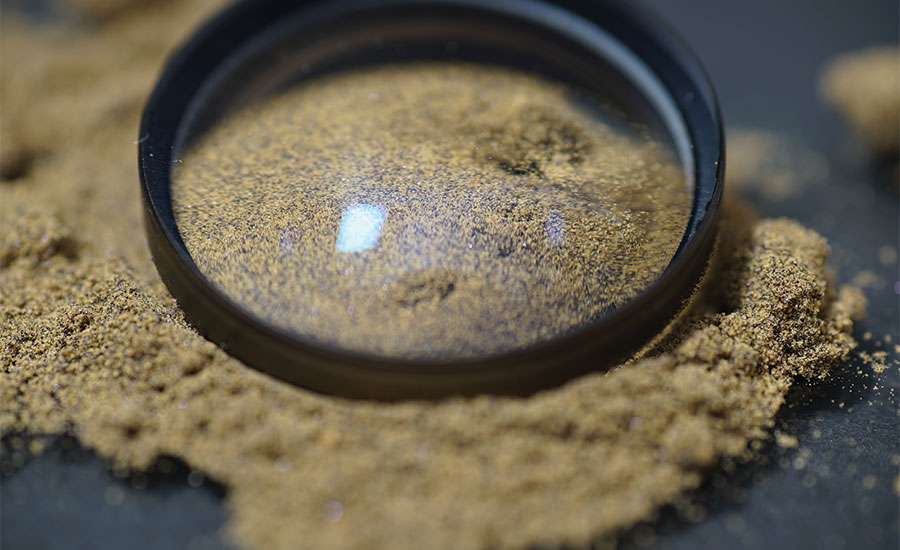Groundwater constitutes a considerable part of domestic water sources in Dubai. Groundwater is characterized as predominantly hard with high alkalinity. One of the most common contaminants of well water or groundwater is iron.
Which are the sources and effects of iron contamination?
Dubai has different varieties of sand which contains high amounts of iron oxides. As rain falls on the land surface and water seeps through iron-bearing soil and rock, iron can be dissolved into the water. In some cases, iron can also result from corrosion of iron, steel well casing, and even water pipes.
Iron minerals in the water turn to rust and stain plumbing fixtures and laundry. The most visible effect of iron contamination is red or brown discoloration of water which causes staining on dishes, laundry, and home appliances. Iron may present some concern if harmful bacteria have entered your water system. Some harmful organisms require iron to grow. If there is iron in the water, it may be harder to get rid of harmful bacteria. Iron can also combine with different naturally occurring organic acids (tannins).
Organic iron occurs when iron combines with an organic acid. In coffee or tea, tannins produce a brown color and react with iron to form a black residue. Although Iron is an essential mineral for a healthy body as it contributes to red cell production and transportation of oxygen throughout the body, excessive amounts of iron can cause toxicity, diabetes, hemochromatosis, stomach problems, nausea, and vomiting. It can also damage the liver, pancreas, and heart.
There are many iron filtration systems available in the market today. Furthermore, there are different types of filtration methods and devices available for iron removal.
Which are the types of iron filtration systems?
A. GREENSAND FILTERS
Iron water filters such as a manganese greensand filter are a common treatment for red-water iron levels up to 10-15 mg/L. Manganese greensand is a powerful oxidizer. When iron and manganese contact the media, they are oxidized out of a dissolved form and turned into solid particulate matter. The precipitate ferric iron is then pulled out of the water by the manganese greensand media and does not continue into the house. Periodically, this media needs to be back washed by potassium permanganate. Potassium permanganate both flush the collected iron flecks down the drain and regenerates the greensand media, restoring its oxidizing capacity.
With proper installation, greensand filters can reduce the following contaminants:
- 10 ppm (parts per million) of both ferric (oxidized) and ferrous (clear) Iron
- 5 ppm of Hydrogen Sulfide (rotten egg odor)
- 5 ppm of Manganese
For best performance, the Greensand System requires pH to be in the range of 7.5 to 8.5, and for best Manganese removal pH is 8 to 9.
B. SPRING WHOLE HOUSE WATER FILTRATION SYSTEM
Another filtration system is the iSpring Whole House Water Filtration with Iron and Manganese removal. This whole house water system removes sediment, chlorine, Iron, Manganese, rust, pesticides, herbicides, industrial solvents, VOCs, and various other contaminants. Since this system is installed at the main water supply, all the water entering the house gets treated thus making it safe for all purposes such as drinking, cooking, washing, bathing, etc. Unlike a Reverse Osmosis system, this system does not reduce Total Dissolved Solids (TDS), thus maintaining the healthy essential minerals in the water.
- The first stage is a high-capacity polypropylene sediment filter that treats water leaving a particle size of 5 microns
- The second stage is the CTO Carbon Block filter, which uses high-quality coconut shell carbon for maximum filtration efficiency and filter life. It helps in removing chlorine taste and odor, pesticides, herbicides, and industrial chemicals.
- The third stage has an iron and manganese reducing filter that removes iron, manganese, and hydrogen sulfide.
The filter is tested by independent third-party to meet NSF/ANSI Standards. It has a capacity of 100,000 gallons (378,000 liters) of water to supply one full year of clean water for a family of four. The last stage FM25B iron and manganese removal filter efficiently reduces iron (3. 0 -> 0. 01 ppm) and manganese (1. 0 -> 0. 01 ppm) and lasts up to 3 times longer than greensand because the catalytic media is not being consumed in the process.
Iron filtration systems can provide effective and convenient treatment at homes that have groundwater or well water as their primary source. Water experts and consultants at ![]() can help customers choose the best available filtration system that meets their requirements. Our technicians will help with the installation process and clarify any questions the customers may have about the filtration devices.
can help customers choose the best available filtration system that meets their requirements. Our technicians will help with the installation process and clarify any questions the customers may have about the filtration devices.
REFERENCES
http://www.idph.state.il.us/envhealth/factsheets/ironFS.htm
https://gulfnews.com/uae/sands-of-time-1.362502
https://www.health.state.mn.us/communities/environment/water/wells/waterquality/iron.html
https://www.freshwatersystems.com/blogs/blog/how-to-remove-iron-from-well-water
https://www.filterwater.com/p-169-greensand-whole-house-filter.aspx
https://www.123filter.com/ac/ispring-whole-house-water-filtration-system-sediment-carbon-iron-manganese-big-blue





